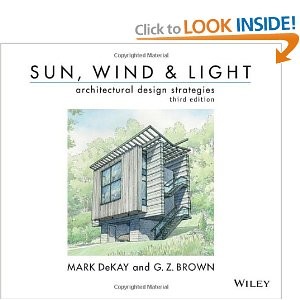 Great Book, I'm a Fan, But Other Works Exist
Great Book, I'm a Fan, But Other Works Exist
May 28, 2007
Bill McKibben
I've been a fan of the author since I read his book on The Age of Missing Information, and I then lost touch with his work. I was reminded of him by Paul Hawken, whose book Blessed Unrest: How the Largest Movement in the World Came into Being and Why No One Saw It Coming I will review this afternoon.
DEEP ECONOMY is a very fine personal effort with a very straight-forward prescription for localizing food production, energy production, radio, and currency. The author is a gigantic intellect, and writes clearly.
The core point in the first part of the book is an emphasis on a need to restore humanity to the process, to reduce industrial era efficiencies in order to enable more intangible values such as community. The opening chapter is a great review of the literature the author is familiar, but I take off one star because the other books I list below are not mentioned, hence this great book is incomplete in that sense.
The author puts forward three areas where life as we know it is going downhill:
1) Our political systems continue to emphasize industrialization and consolidation that is not affordable by our current rates of depleting energy and water;
2) There is not enough energy for China, let alone Brazil, India, Indonesia, Iran, Russia, Venezuela, and Wild Cards like Turkey and South Africa, to follow in our steps.
3) All this “more” is not making us happier. Indeed the author documents, as others have, that the US was happiest in 1946, and it's been downhill from there. He pegs financially-stimulated happiness at $10,000, after which more money does not bring more happiness in relation to self, community, and eternity.
He educates in pointing out that 50% of the global economy is tied up in food systems; that 50 acres can support 10-12 families; that a gallon of gasoline releases five of its six pounds of weight as emissions.
He introduces Bob Constanza and the calculated value of the ecosystem we are destroyed at $33 trillion annually. I learned of the Earth Stakeholder Report and about Behavioral Economics from this author. To that I would add the World Index of Social and Environmental Responsibility (WISER) and the inspiring works of Paul Hawken with “true cost” metrics and Jon Ramer with local currencies, Interra.
The middle book focuses, as others have, on the loss of community, on hyper-individualization, and on how Wal-Mart can save someone roughly $58 a year, but cost them their entire local economy. He uses this to emphasize the urgency of restoring our sense of community so we can make decisions as a collective, for the common good.
Like Al Gore, but with less pomp, he rails against advertising as the engine for unnecessary consumption.
I was surprised by, and then in agreement with, his voiced need to restore local radio stations that actually focus on local needs and concerns and news. His critical comments on the conglomerate shows that feature Rush Limbaugh and morons talking about pornography are properly devastating.
Take home message: localization is the only way to achieve resilience–the federal government is not going to be effective in the short or long term as things now stand. We learn that the ideal community size for participatory democracy is no more than 500 voters, of whom 40% can be expected to show up for a town hall meeting.
We learn that Anthony Lovins has reported to the Department of Defense that if they spend $180B over the next ten years–$18B a year–that can cut US oil imports in half, and save $70B a year in addition. Now that is what I consider to be a key piece of public information.
He is generally negative on Tom Friedman, with which I agree, and Jeffrey Sachs, for whom I hold out more hope.
Below are the books that teach us beyond and before the scope of this book, which I am very happy to have read and added to my library.
Manufacture of Evil: Ethics, Evolution, and the Industrial System
Consilience: The Unity of Knowledge
The Future of Life
The Ecology of Commerce
Natural Capitalism: Creating the Next Industrial Revolution
Pandora's Poison: Chlorine, Health, and a New Environmental Strategy
Water: The Fate of Our Most Precious Resource
Resource Wars: The New Landscape of Global Conflict With a New Introduction by the Author
Betrayal of Trust: The Collapse of Global Public Health
Blessed Unrest: How the Largest Movement in the World Came into Being and Why No One Saw It Coming








